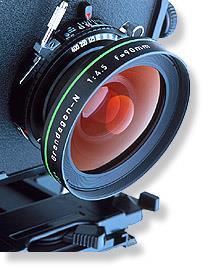Impactful Website Design with Full-screen Background Images
BY ITW Consulting
ITW Consulting Corp
Responsive design, born out of the explosion in screen sizes and mobile devices, has also helped popularize the full-screen background image in website design, immersing the user in an experience entirely different than only a few years ago. Because images can now be instantly resized to accommodate every browsing scenario, from large-screen desktops at home to smartphones on the go, graphic designers are freer than ever to experiment with full-screen background images.
Magazines have long been known for their stunning full-page visuals – even the ads are appealing. But website design has recently taken a page from the print playbook by incorporating large, scalable images for backgrounds. Responsive design has been around for a few years now, but refinement, as with any new process, took time.
This is especially true for images, which at first didn’t ‘respond’ the way graphic designers and website design firms had hoped. Advancements in browsers, as well as web design techniques and tools, have since made it easier to create sites that offer a consistent (relatively speaking) experience. Full-screen images are nothing new either, but it’s only more recently that they could look good on a variety of devices without being clunky or otherwise hampering the site’s usability.

Not every site is cut out for the big screen. Many of the earliest examples of full-screen background images could be found on fashion websites, which relied on imagery more than words to communicate ideas. Much like their brethren in the world of print publications, fashion sites put the old adage “a picture is worth a thousand words” to good use.
And while these style-centric businesses have stuck with the trend, website design firms are increasingly using full-screen backgrounds for other purposes. Of course, the key is in having visually arresting material, something that lends itself well to a large-scale representation. That’s also why original photography or illustrations make better candidates for a website using this kind of design principal; whereas stock photography should be reserved for smaller stages, since users can usually (but not always) spot the difference.
Undermining words?
Sites with strong aesthetics also tend to shun text, which explains the sparse menus and relatively little written content. To design a website with both elements in equal proportion would overwhelm the user, just as in a print environment. That’s not to say that an informative site can’t also have nice visuals, only that the website design team will have to plan carefully to integrate them both seamlessly. Strong images have a place in every site, but not when they are competing for space with text.
Looking at some of the top sites with full-screen background images will show how this delicate balance should unfold. Then compare how a fashion or design website treats text to the way that a news site handles images. In each case, how do they keep things in harmony?
In speaking with prospective website design firms you might also decide that only the homepage will feature a full-screen image, preferring to have a more equitable relationship between visuals and information throughout the rest of the site. Graphic designers will be able to create wildly different impressions by simply subbing in different background images (even if the rest of their job is much more time-consuming and less appreciated).
Your site might not be a good candidate for the full-screen treatment, but that doesn’t mean it can’t be rich in visuals or style. Speak to a website design company that will take the time to understand your brand and your audience, because ultimately a site’s success is tied to the return it generates on your investment.
